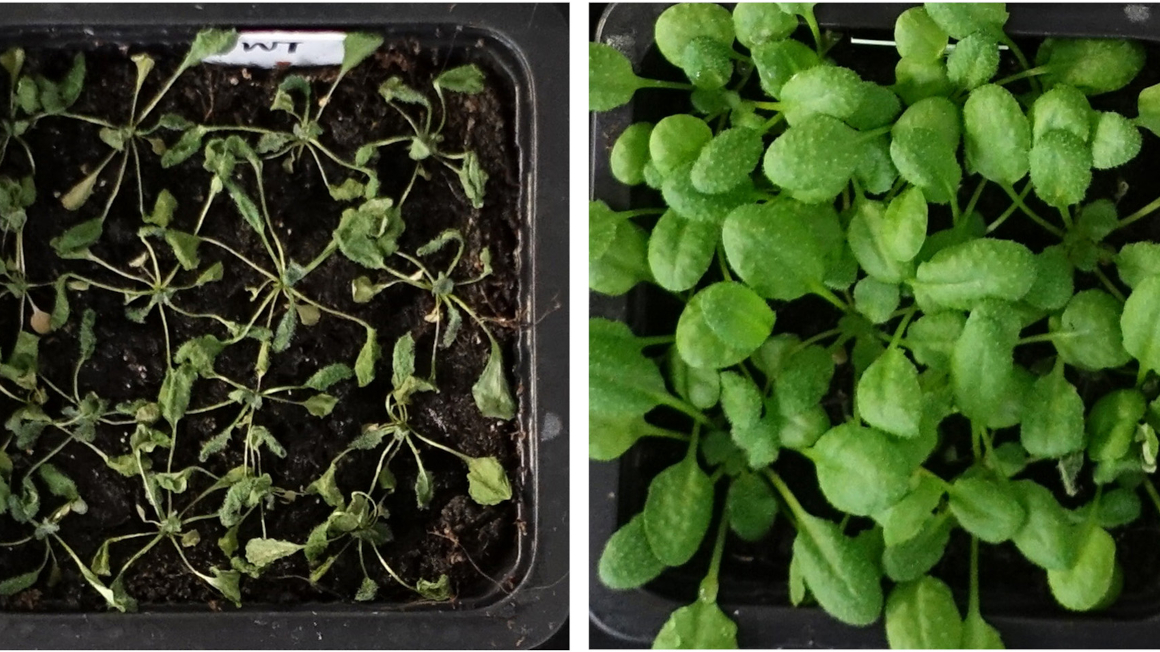Grafting and genome editing for rapid creation of new varieties
Max Planck researchers have presented a combination method that produces plants without traces of the gene scissors.

CRISPR-Cas was a breakthrough for plant breeding: The genome editing method works more precisely than classical genetic engineering and avoids many of the things for which classical genetic engineering was criticized. But although the "gene scissors" produce results much faster than conventional breeding, they are still quite slow, especially for woody plants. Researchers at the Max Planck Institute for Molecular Plant Physiology have now removed the backcrossing bottleneck with a combination method. They present the method in the journal Nature Biotechnology.
Backcrossing can be difficult or lengthy
Although CRISPR-Cas no longer introduces foreign genes, the gene scissors still bring foreign DNA with them - their own: "The so-called gene scissors CRISPR-Cas are themselves introduced into the plant DNA in the cell nucleus as a DNA sequence. It consists of two components," explains research group leader Friedrich Kragler. On the one hand, there is the so-called guide, which has a base sequence that directs the gene scissors to the right place in the plant DNA. On the other hand, there is the sequence for the gene scissors themselves, the enzyme Cas9. CRISPR-Cas technology can thus be used to trigger changes in the plant's DNA at a precisely defined location. "Once the desired change has been achieved, however, previous methods still require the DNA sequence of the gene scissors itself to be removed from the plant's cell nuclei by means of complex backcrossing," says Kragler.
Until now, this foreign DNA was removed by backcrossing over several generations until a plant had lost this DNA again. But some plant species do not backcross well or, like fruit trees, have very long generation times. The solution to this problem is more than 2,000 years old: grafting.
Genome-edited seeds without foreign DNA after one generation
Grafting is used mainly for fruit trees and vines. In this process, a variety is used as a "rootstock" and its trunk is cut in or off. The stem of a noble variety, the "scion," is then grafted onto the cutting. The researchers now grafted the shoot of a genetically unmodified plant onto the rootstock of a plant with CRISPR/Cas DNA. The rootstock produces messenger RNA in its cells, which the cells then use to produce the gene scissors. However, the experts had adapted the rootstock so that it can transport the messenger RNA to the upper part of the grafted plant. In this way, this genetically unmodified part of the plant can continue to form the gene scissors in its cells and produce genome-modified seeds. Some of the seeds carry the desired genome modification after only one generation, without containing the DNA of the gene scissors. These seeds are no longer distinguishable from the naturally evolved variants.
The project team believes that the new method has broad applicability: "So far, targeted genetic engineering methods have only been established for a few, very well researched plants such as tobacco or thale cress," explains Kragler. "But since grafting often also works between many not-so-closely related species and rootstocks can be easily propagated, it is conceivable that a rootstock can be used multiple times to specifically provide plants of different species or cultivars with desirable new traits."
bl


